The 35th World Congress of Audiology was opened at the World Hearing Center in Kajetany on 10 April 2022. – This is one of the first direct meetings of audiologists, otorhinolaryngologists, phoniatricians, acousticians and specialists in related fields after the pandemic break, so we are positive that this international meeting will abound in new ideas and projects – said Prof. Henryk Skarżyński, the President of this year’s Congress. This exceptional event was accompanied by the national 15th Scientific and Training Conference of the Audiological and Phoniatric Section of the Polish Society of Otorhinolaryngologists and Head and Neck Surgeons. In total, over a thousand participants registered for these scientific events.
The world congress and national conference began with a session of demonstration surgeries of Prof. Henryk Skarżyński with a team of otosurgeons at the World Hearing Center. The session included surgical procedures performed on patients with various types of hearing disorders and the use of various types of hearing aids, including hearing implants. Prof. Henryk Skarżyński presented, among others, cochlear implantation through a round window in patients with total and partial deafness following his original 6-step method. He also performed demonstration surgeries of middle ear and bone conduction implants, as well as middle ear surgeries such as ossiculoplasty (surgery to repair a chain of sound-conducting ossicles damaged by inflammation or cholesteatoma) and stapedotomy, a procedure to replace an immobile ossicle (stirrup) with a prosthesis used for otosclerosis treatment.
The session of demonstration surgeries presenting contemporary possibilities for surgical treatment of hearing disorders summed up over 40 years of scientific and clinical work of Prof. Henryk Skarżyński, also alluding to the anniversaries celebrated this year by the Institute of Physiology and Pathology of Hearing:
30 years ago, in 1992, Prof. Henryk Skarżyński was the first in Poland to perform implantation on a deaf patient. This pioneering surgery became the first step toward developing a deafness treatment program in Poland.
25 years ago, in 1997, Prof. Henryk Skarżyński was the first in the world to present in New York a new program extending the indications for the use of cochlear implants in the treatment of total deafness only. He started research and regular surgeries in patients with the profound hearing loss allowing for preservation of preoperative residual hearing in the low frequency range after implantation. Their results indicated that proper implant electrode placement in the inner ear preserves residual hearing in adults and children. The results were presented in 2000 at the 5th European Conference on Cochlear Implants in Children in Antwerp by Prof. Skarżyński et al., and during the 4th Congress of the European Federation of Oto-Rhino-Laryngological Societies in Berlin by Dr. Artur Lorens et al. The significance of the findings was enormous. Specialists of the Institute of Physiology and Pathology of Hearing have demonstrated that a functioning part of a cochlea does not have to be destroyed during implantation, as previously suspected. The results made it possible to believe that in the future, it would be possible to successfully treat people with partial deafness who still have a normal or socially efficient hearing in the low frequency range up to 250 Hz, 500 Hz and 1500 Hz.
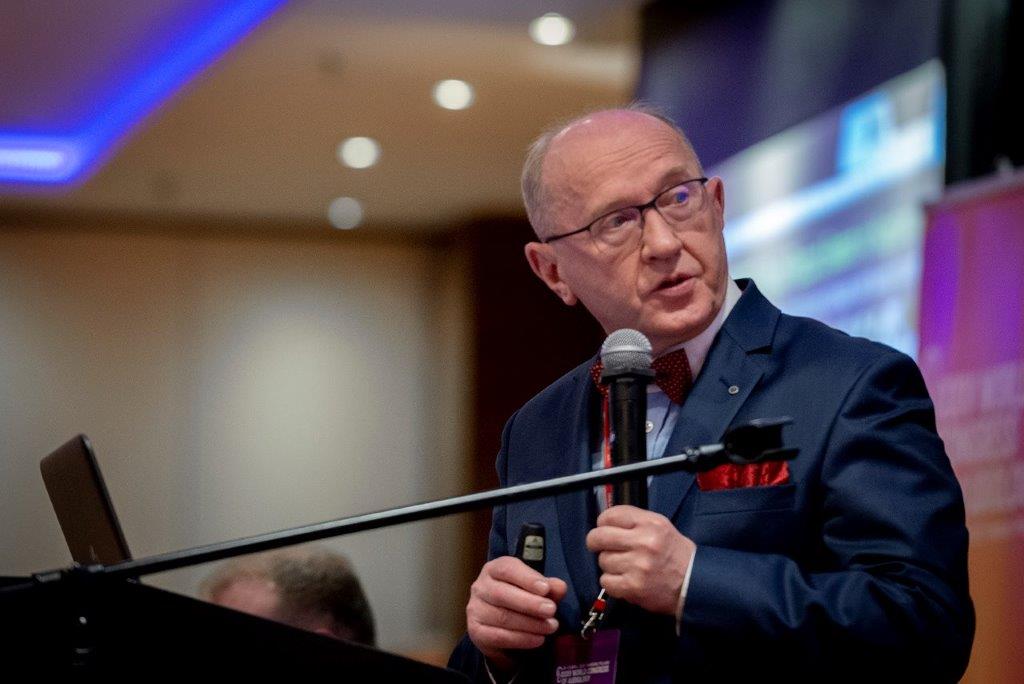
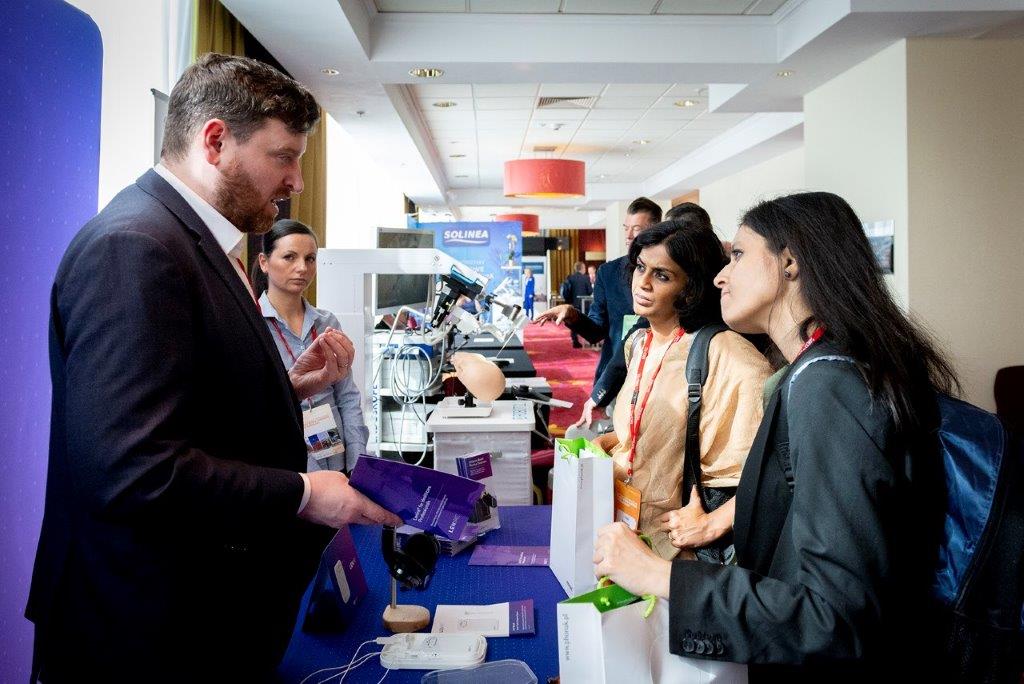
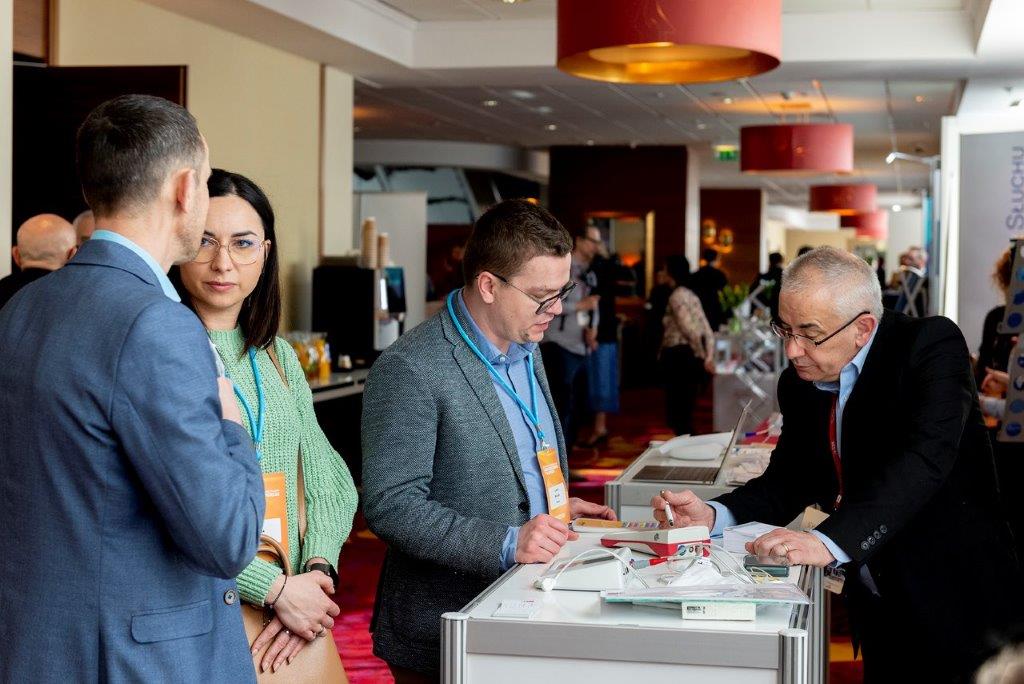
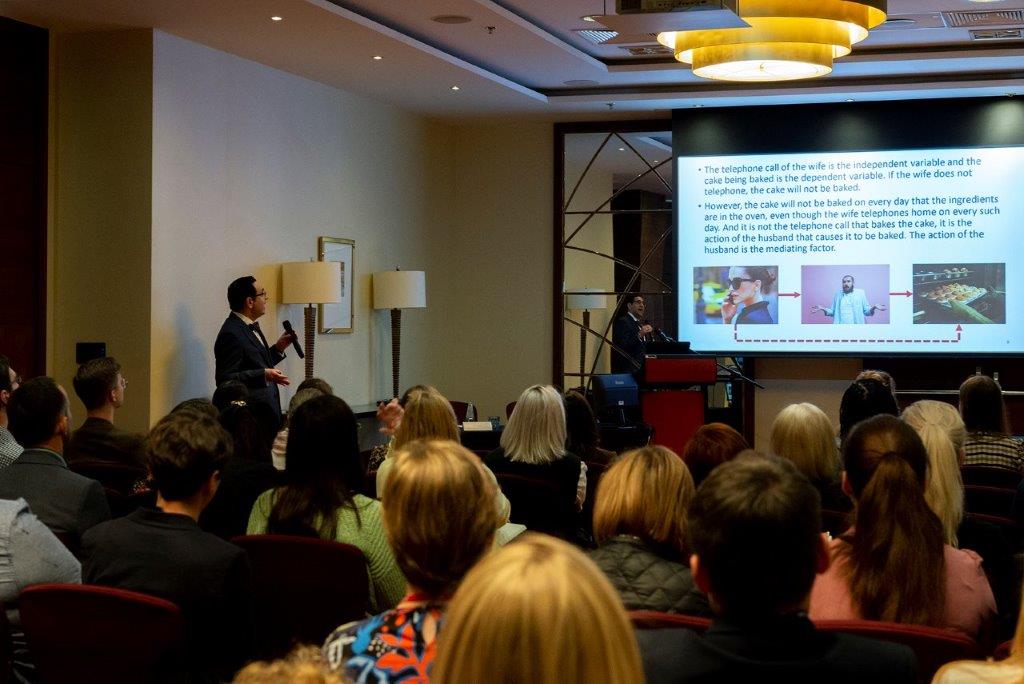
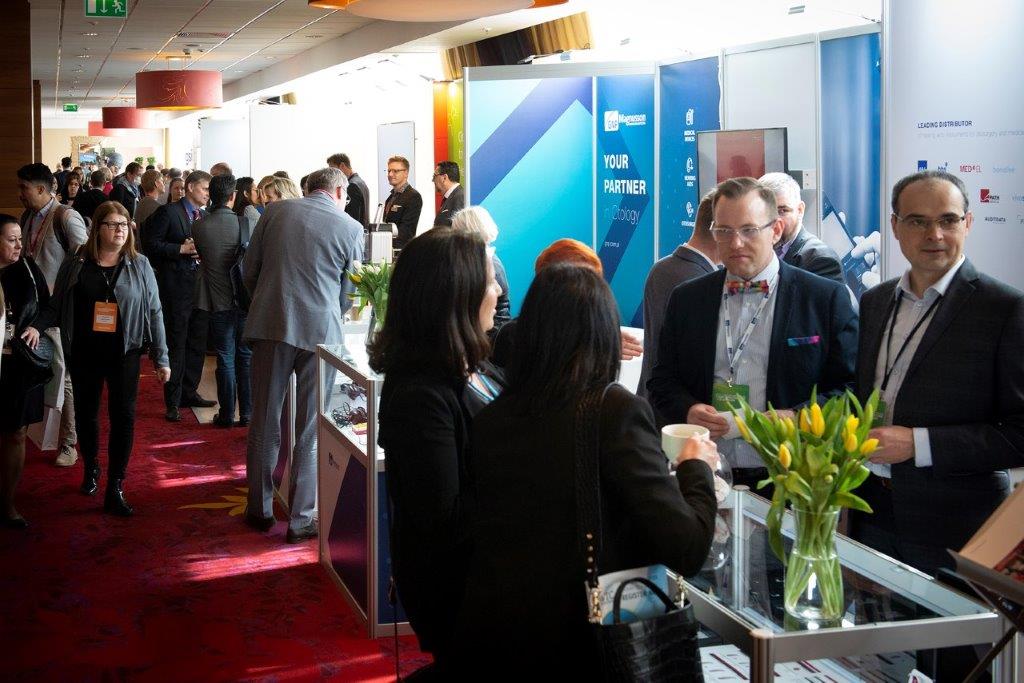
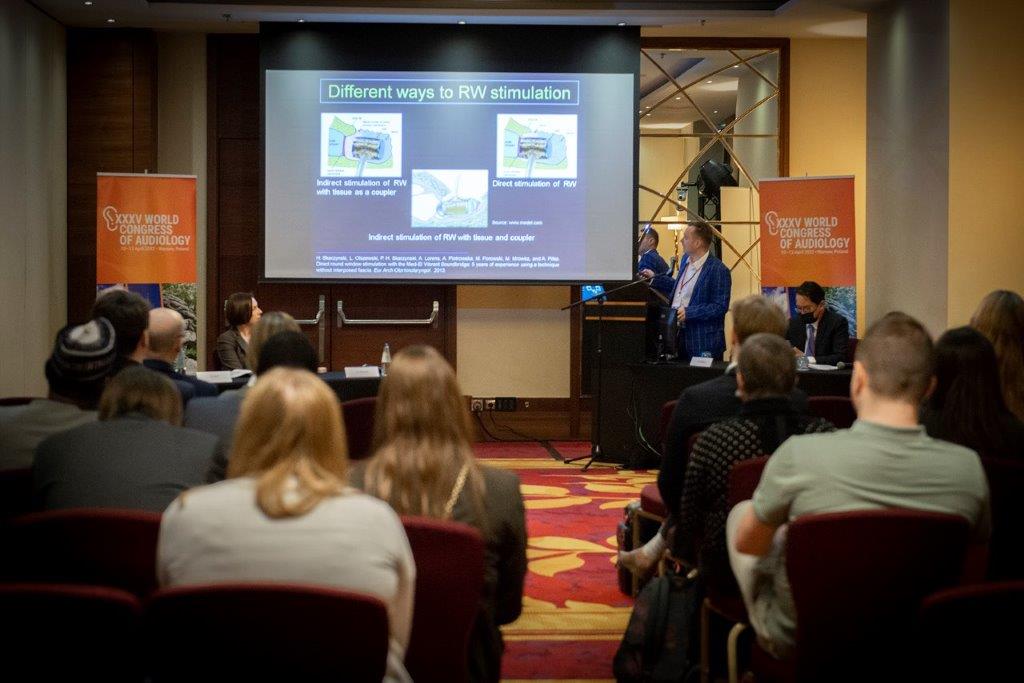
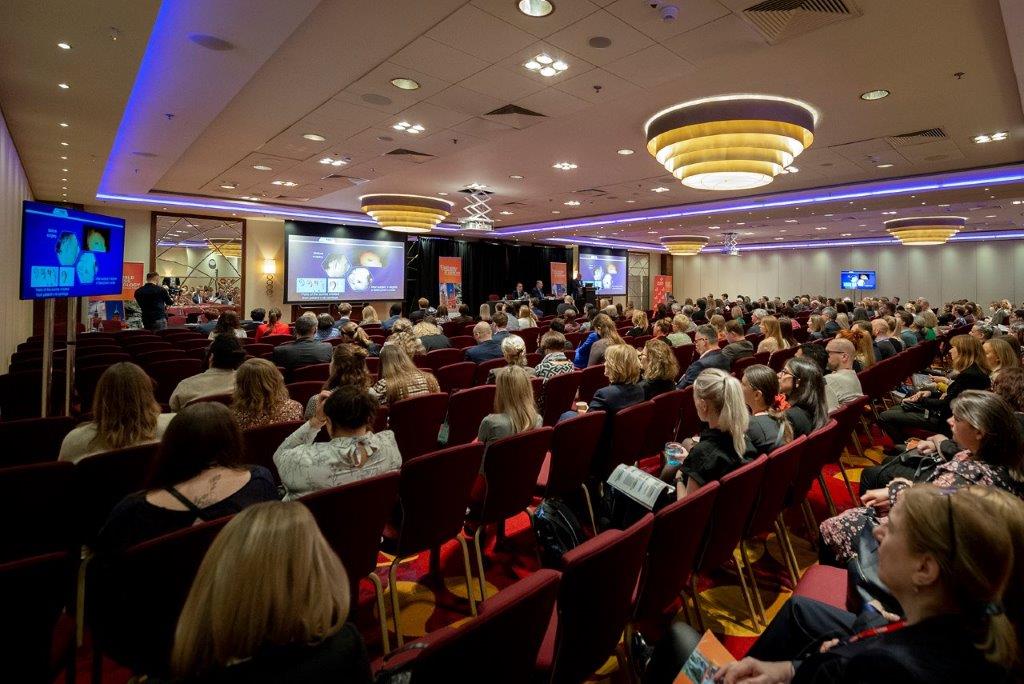
20 years ago, in 1990 (2002), Prof. Henryk Skarżyński performed the first cochlear implantation on a partially deaf patient. Previously, implants were only placed in patients with severe hearing loss or total deafness. People who had difficulty hearing and understanding speech because of damage to the part of the inner ear (cochlea) that receives high-frequency sounds (known as partial deafness treatment, PDT) had no chance of receiving similar treatment. According to the current knowledge, inserting an implant electrode into the cochlea could cause irreversible damage to the cochlea and disrupt the processes involved in hearing, for which Prof. Georg Békésy received the Nobel Prize in 1961. Following the results of studies from 1997 to 2000 indicating that preservation of residual hearing after implantation is possible, Prof. Henryk Skarżyński operated on a partially deaf patient using his own procedure of inserting the electrode through a round window. The operation in 2002 was transmitted live online to many centers around the world. The effects of the surgery were excellent. Nowadays, the so-called 6-step Skarżyński procedure is used in otosurgical clinics worldwide. Only 9 thousand surgeries following this procedure have been performed in the World Hearing Centre so far.
The agenda of the 35th World Congress of Audiology was extensive. On the first day, there were workshops and scientific sessions on the implants’ fitting, diagnosis and treatment of tinnitus, frequently diagnosed in numerous patients, auditory processing and central hearing disorders, screening and early detection of hearing loss. The Congress organized in Kajetany and Warsaw was attended by the world’s most distinguished experts in otolaryngology, audiology and phoniatrics, including Prof. Kurt Stephan, President of the International Society of Audiology (ISA) – the organizer of the Congress, one of the most eminent specialists in audiology and a pioneer in the use of objective tests in the process of implant fitting (from Austria), Prof. Olivier Sterkers, world-famous skull base surgeon (from France), Prof. Manuel Manrique, a prominent otolaryngologist and otosurgeon, as well as a specialist in otoneurology (from Spain), Prof. James W. Hall, one of the world’s most prominent specialists in the objective assessment of hearing (from the USA) and several hundred other experts from all continents.
The Congress was inaugurated in the World Hearing Center in Kajetany, where – which is worth reminding – for several decades, the largest number of hearing surgeries in the world has been performed annually. The Center has state-of-the-art equipment and devices, and the most advanced telemedical solutions are applied here. Therefore, workshops – classes conducted by outstanding experts allowing participants to improve their practical skills were planned for the first day of the Congress. The workshops were devoted to assessing hearing in infants using objective methods, tinnitus therapy, evaluation of auditory hypersensitivity using audiological and psychometric tests supplemented by an in-depth clinical interview, and the application of imaging in the examination of the auditory system and language processing. The venue of the latter workshop was the Scientific Center for Biomedical Imaging of the IFPS, where, among others, studies of auditory processes using functional magnetic resonance and computed tomography have been conducted for many years.
Apart from the workshops, several scientific sessions took place on the first day of the Congress, two of which were devoted to cochlear implant fitting. To a large extent, this procedure affects the benefits for the patient from the implanted device. However, the procedure is complicated, and the so-called automation of the implant fitting system in the future is under discussion. Currently, there are no specific, internationally accepted guidelines for the fitting process, so further research is needed to improve the process to take account of the individual needs and capabilities of patients. As discussed during the session, there are groups of patients that require customized settings. An example was given of patients with autism who cannot cooperate enough with a specialist to allow him to make a correct decision relating to the settings of the speech processor based on subjective feelings or observations of the patients. Another group of such patients are persons suffering from facial nerve palsy who, unlike most hearing-impaired patients, require different stimulation modalities and settings to minimize nerve irritation while optimizing hearing.
Another distinct group of patients are those with a cochlear implant in one ear and a hearing aid in the other. During the session led by Prof. Manuel Manrique, a prominent Spanish otolaryngologist and otosurgeon and a specialist in otoneurology, how to match these two devices for the patient to obtain maximum hearing benefits were discussed.
During the session, experiences were exchanged on fitting based on observational, subjective testing (the specialist asks the patient whether they hear quiet or loud sounds during stimulation of individual electrodes) and on the results of biomarker measurements (such as measurement of electrically evoked compound action potential). A great deal of attention was given, among other things, to the examination of the stirrup muscle reflex, which makes it possible to protect patients, especially the youngest ones, from excessive stimulation during the processor setup. The stirrup reflex is a defence mechanism that protects the inner ear from acoustic trauma. When a high-intensity sound occurs, the brain sends a signal that causes the stirrup muscle to contract. In implanted patients, this reflex indicates that sounds reaching the central part of the auditory pathway through the auditory nerve are interpreted as very loud. The results of the stapes muscle reflex test are essential. Especially in young patients, children cannot always tell which stimuli are quiet and which are loud. Therefore the risk of overstimulation is higher in their case.
It is worth recalling that research on the stirrup muscle reflex was started in the 1980s by one of the chairmen of the session on cochlear implant fitting – Prof. Kurt Stephan, current President of the International Society of Audiology. In the Institute of Physiology and Pathology of Hearing, testing of the stirrup muscle reflex has been performed at the stage of stimulation selection for a long time. However, it is not applied in all centers. – The interest of specialists in this topic proves – comments Prof. Artur Lorens, co-chairman of the session, that after years of scientific research the testing of the stapes muscle reflex is starting to be applied more frequently in the clinical practice of otosurgical centers.
The program also included scientific sessions on fitting implants, diagnosing and treating tinnitus diagnosed every time more often, auditory processing and central hearing disorders, screening and early detection of hearing loss. The day was closed with the official opening ceremony of the Congress hosted by its President, Prof. Henryk Skarżyński and the world premiere of the documentary “My Moonlight Sonata” directed by Barbara Kaczyńska, whose medical consultant was Prof. Henryk Skarżyński.
The main character of the movie is one of the musically talented patients of the Professor and the winner of the first edition of the International Festival “Beats of Cochlea” – Grzegorz Płonka. His extraordinary story (a boy with profound hearing impairment, diagnosed in childhood with autism, has musical talent and passion, which empowers him to fight not only to improve his hearing, but also to graduate from a music school), documented by Barbara Kaczyńska was presented in 2017 at the Festival of Documentary Forms NURT in Kielce, winning the Annual Special Award of Radio Kielce – “for the artistry of sound in a documentary form”. As the film director, Barbara Kaczynska admitted, “sound was of key importance in this film, because the protagonist, while regaining his hearing, at the same time regained the ability to live a full, creative life”. The program of the Kielce Festival described the movie as “an elevating story of a young musician, who owing to Professor Henryk Skarżyński’s medical mastery, not only regains hearing but also stands on the threshold of a great artistic career”.
The third day of the conference was devoted to exchanging knowledge and experiences in diagnostics and therapy of hearing disorders, including otosurgical treatment. During the scientific sessions, a lot of time was devoted to the reports on the problems faced by otosurgeons in their everyday clinical practice, implanting different types of devices in different groups of patients. One of the highlights of the third day of the Congress was undoubtedly the round table discussion on the use of different types of implants (cochlear, middle ear and bone conduction) and reconstructive surgery, led by Prof. Piotr H. Skarżyński. At the beginning of the session, the experts tried to answer which of the devices used in the last 5-10 years may be considered the most important. Experts were not unanimous on this issue, but many were of the opinion that it was Adhear, the first non-surgical bone conduction device. The use of different solutions for patients with unilateral deafness was discussed in detail during the session, pointing out both non-surgical methods (CROSS system) and otosurgical ones, consisting of cochlear implants or bone conduction implants.
A topic of particular interest was the treatment of patients who have lost hearing in one ear after COVID-19 infection. The treatment offered in such cases is cochlear implantation. Such surgeries are already performed at the World Hearing Center, and clinical data on the course of rehabilitation in this group of patients are also collected, as Prof. Artur Lorens mentioned. Other topics discussed during the round table included: the customization of prosthetic devices in middle ear surgery, the use of bioactive glass, the use of hearing aids in patients after stapedotomy, optimal otosurgical solutions for elderly patients and many others.
One of the round table participants was Prof. Ranjith Rajeswaran from India, a pioneer in implant audiology and aural rehabilitation for children and adults with cochlear implants. He was the first in Southeast Asia to, i.a., use brainstem implant treatment to restore hearing in children having no inner ear and auditory nerve. He dedicated one of his lectures to brainstem implants. Brainstem implantation in children is one of the most complicated procedures in implantology – it is rarely performed, and specialists from all over the world have been discussing the possibility and legitimacy of its application (since it does not always give satisfactory results) for many years.
When discussing the efficacy of implant treatment, a finding of the interdependence between auditory, visual, and cognitive abilities seems extremely important. While there is no doubt that cochlear implants improve the patients’ quality of life, their benefits differ, particularly with regard to speech understanding, which, as shown by research, is a multi-sensory process involving not only the auditory system – visual information about lip movements and facial expressions are integrated with auditory information. Cognitive processes (such as working memory, processing speed, attention) are also involved in speech understanding, especially when the speech signal is distorted by noise, hearing loss, or implant-supported hearing. The interaction between auditory, visual, and cognitive abilities is currently investigated. As it is supposed, its detailed understanding may help to develop even more effective methods of hearing rehabilitation in implanted patients.
Evaluation of the effectiveness of implant treatment and subsequent hearing rehabilitation has been debated by specialists for a long time. During the Congress, a panel discussion was held, chaired by Prof. Arthur Lorens entitled “New Ways to Measure the Benefits Obtained by Patients after Cochlear Implantation”. The new way of assessment is based on the functional model of disability developed by ICF (International Classification of Functioning, Disability and Health) and described as an integrated biopsychosocial model of functioning and disability. According to this definition, not only the auditory benefits of the implanted device are assessed (how much the perception of sounds improves, how much the detection, discrimination and identification of speech signals improves), but also the benefits related to the patient’s activity and social life participation. Specially developed tools (patient-reported outcome measures, PROMs) and questionnaires are used to measure the auditory benefits. It is considered to be a more complete and objective way of assessing the benefits of implanted patients, as there may be situations where a patient becomes very active and participates in social life after treatment, even though their hearing test results may be considered average. Conversely, sometimes very good audiological test results after implantation do not bring about such positive changes in the patients’ activity and their social life participation.
The next day of the Congress abounded in important topics – a round table discussion chaired by Prof. James Hall, a renowned audiologist from Salus University (Pennsylvania), was devoted to the so-called good practices in audiology, a set of recommendations and guidelines in this field of medicine consistent with the current state of medical expertise, aimed at standardization of management of audiological diagnosis and treatment. During the session, the audiological care systems adopted in various countries of the world were presented, frequently pointing out the increasingly popular telemetric solutions (e-health, e-screening). During the discussion, specialists from countries where the level of medicine is much lower than in Europe or America also presented their point of view. One of the audiologists from Senegal, when talking about the difficult situation in the Senegalese health care system and the lack of educational opportunities in audiology, thanked the International Hearing and Speech Center “Medincus” for scientific and didactic cooperation, which offered a chance to improve the level of audiology care in his country. As it was emphasized at the end of the meeting, the patients’ well-being is always of the utmost importance. Therefore, a proposal was made to hold a similar session with the participation of patients during the next World Congress of Audiology planned in Paris in two years. – This debate on best practices was highly productive, exceeding all my expectations, concluded the chairman Prof. James Hall.
A separate panel discussion and the scientific session were devoted to hearing loss genetics. Research shows that 1 to 6/1000 children are born in the world with severe hearing loss every year. The vast majority of these children have hearing loss caused by the GJB2 and GJB6 genes. However, there are many more genes responsible for hearing loss (as estimated, there are over 200 of them) and the knowledge about genetic causes of hearing loss is still scarce. The results of a worldwide search for new mutations responsible for various hearing disorders were presented. Such studies are carried out – as in the Department of Genetics of IFPS – with the participation of patients (children and adults), those qualified for cochlear implantation, or animal models (zebrafish).
In the context of growing global problems with hearing caused, among others, by omnipresent noise, the session devoted to the prevention of hearing loss was significant. Dr. N. F. Moroe from the Department of Audiology at the University of Johannesburg presented exciting results of a questionnaire study carried out with the participation of cab drivers and public transport drivers, showing the effects of long-term exposure to urban exposure noise. Most participants reported suffering from tinnitus, clogged ears or hearing problems. However, out of the 78% of participants reporting complaints, up to 74% had never been informed (warned) about the harmful noise effects on hearing. Awareness of the problem in the surveyed professional group is therefore negligible. Dr Moroe stressed that such people should receive audiology care, and it is the duty of local audiologists to raise awareness of the harmfulness of noise to hearing. This is, in fact, the mission of all specialists worldwide, as it was emphasized during the session that noise is considered one of the most dangerous “pollutants”. Optimistically, there is also good news. Scientists are investigating whether noise-induced hearing loss can be prevented, at least to some extent, by taking antioxidant compounds. Noise exposure, among other things, causes inflammation and release of free radicals and oxidative stress, damaging the auditory cells in the cochlea. In one submitted paper, substances containing antioxidants, such as propolis (bee putty) indicated by Dr. T.S. Baytok of Istambul Aydlin University, annul these damaging processes. Hence they have positive effects on health and, as it turns out, also on hearing.
During the Congress, i.a., 55 scientific sessions and 12 special sessions, 23 keynote lectures, 12 panel discussions, and 2 round table discussions were held. During the closing ceremony of the Congress, Prof. Henryk Skarżyński thanked all the participants of this first and, at the same time, the most numerous meeting after the pandemic break, who arrived to Kajetany and Warsaw from all continents.
– Over the past years, we have learned that improved communication plays an important role in the global exchange of knowledge in any scientific field, including audiology. The ISA has taken current needs into account by creating an online communication system. We have seen, however, that communication via electronic media cannot replace face-to-face meetings where scientists have the opportunity to directly participate in discussions, in a relaxed atmosphere – said Prof. Kurt Stephan, President of the ISA, emphasizing at the beginning of the Congress that the Warsaw audiological community created an opportunity for such a meeting. The next World Congress of Audiology is planned for September 2024 in Paris.
One of the last but the most awaited items on the congress agenda was the lecture in honour of Prof. Aran Glorig (Aran Glorig Oration). A lecture commemorating the contributions of one of the most distinguished physicians in otolaryngology is a tradition of the ISA congresses. This year it was given by Dr. Ross Roeser, who has been considered a leader in audiology for decades. In addition to his work on using hearing aids to improve communication skills, he has made a key contribution to defining and expanding the scope of practice for audiologists in the United States. He is one of the founders of the American Auditory Society and the American Academy of Audiology. He is also the founder and editor-in-chief of the first audiology journal, Ear and Hearing, and is currently Editor Emeritus of the International Journal of Audiology. As an experienced physician and editor, and above all an unquestioned authority, Dr. Ross Roeser dedicated the Aran Glorig Oration to the search for scientific truth in audiology. As he pointed out, truth is increasingly difficult to find in an Internet age filled with unverified information and fake news. But the truth is also tricky to find, because our perception may be falsified. “Don’t believe anything you hear, and only half of what you see or read,” joked Professor Roeser. He encouraged their reliable review by scientific bodies when talking about scientific publications.
A highlight of the last day of the Congress was a special session of the World Health Organization. Dr. Shelly Chadha presented the results of the WHO report released last year, which shows that by 2050 nearly 2.5 billion people worldwide will be have hearing problems. According to estimates, at least 700 million people will need access to specialized care. The reported reasons for the growing percentage of people with hearing problems include noise, various electronic devices with headphones (about 1.1 billion young people are at risk of hearing damage due to listening to music through headphones), and ear infections. Most of these problems are preventable. The WHO has developed a strategy to prevent hearing damage, which includes hearing screening in all age groups, prevention of ear diseases and their proper treatment, noise reduction, promotion of knowledge about threats to hearing and treatment options for hearing disorders. When discussing universal hearing screening and medical interventions, Dr. Shelly Chadcha emphasized that money spent on such activities is not a cost. Still, an investment in health – in general, 1 dollar spent on prevention and treatment brings 16 dollars of profit (people whose hearing disability was prevented will not be charged on national budgets).
The big challenge – as WHO points out – is to increase access to medical care for people with hearing impairment. Unfortunately, currently the majority of patients worldwide (approximately 70%) do not have access to hearing diagnostics and treatment. Therefore, WHO is focusing on taking steps to change this situation. Emphasizing that every person with hearing impairment should have the possibility of treatment and rehabilitation in the future, it draws attention to the need to expand specialized facilities and increase the number of specialists.
The latter problem was brought up by experts during a panel discussion devoted to models of audiological education, chaired by Prof. Artur Lorens with the participation of Professors R. Rajeswaran, J. Hall and S. Hatzopoulos. Considering the magnitude of hearing problems in the world, audiologists are in short supply. The situation is dramatic – in developing countries, there are no opportunities for education in audiology, and there is one specialist for several (1-10) million inhabitants (!). In some parts of the world, there are 100 – 1000 times fewer audiologists than in Europe. However, even on the old continent or in America, the education of specialists in this field needs improvement. As pointed out during the session, different educational models apply in different countries, e.g. in Poland, audiology is one of the medical specializations. Still, it is not a solution adopted in all countries, e.g., an audiologist does not have to be a physician in the USA. It was emphasized that audiology is a very broad field combining elements of medicine, physiology, psychology, engineering and others, so the question remains open, what model of education should be promoted, including e-learning, so that in the future – as the WHO assumes – every patient who needs it, would be equipped with appropriate hearing aids.
On the last day of the Congress, the previously discussed topic of the benefits of cochlear implants in various groups of patients, including those with asymmetrical hearing, Cogan syndrome, unilateral deafness and others, was continued. In the case of children born with the latter defect, treatment – as emphasized by Prof. A. van Wieringen from the University Hospitals Leuven in Belgium – is extremely important, as unilateral deafness not only makes it difficult for them to localize sounds and understand speech in noise, but also results in risks associated with delayed speech development. A cochlear implant in a deaf ear can restore binaural hearing. The earlier this treatment is performed, the better the results can be expected, according to research. Despite this, in Belgium, as in many other countries, deaf ear implant treatment is not a standard. In turn, Dr. M. J. Kwak, from the University of Ulsan College of Medicine in Seoul, stressed the benefits of cochlear implants in the oldest patients with sensorineural hearing loss: his study group included people aged 60 to 80 who were tested positive for speech understanding and those who had difficulty with it. The study found that the degree of speech understanding in the implanted patients depended on the duration of the hearing loss (those with a short history of hearing loss had better results). The age of the patient at the time of implantation had no significant effect on the speech understanding of seniors. This is essential information because in ageing societies, including the Polish one, the group of seniors, in which about two-thirds of people have problems with communication, is systematically growing.
On the last day of the conference, one of the sessions was devoted to ototoxicity. Not only can certain medications pose a threat to hearing, but also organic solvents such as toluene and xylene present in the work environment, reported Dr. A. Fuente of the University of Montreal, presenting results from both human volunteers and animal studies showing that exposure to these compounds can damage hearing cells. When the experiment involved exposure of animals both to solvents and noise simultaneously, a synergy effect occurred. In addition, exposure to solvents can cause central hearing loss, according to a study with the participation of human volunteers.
These are only some of the topics discussed on the last day of Congress. During the scientific sessions, experts raised many more specialized topics – further lectures and presentations concerned, among others, electrophysiological tests and their use as objective tests in hearing the diagnosis, tools for checking speech understanding, tests for diagnosing central hearing disorders, e.g. Gaps in Noise (GIN) test used since 2005. They also discussed which model of audiology education may be considered optimal and what should be changed in the current way of educating audiologists.
A nice moment during the closing ceremony of the Congress was the presentation of awards. Audiology Research Best Poster Award went to Pushkar Deshpande (Denmark). Mukovhe Phanguphangu (South Africa) received Journal of Hearing Science Best Oral Presentation Award.





